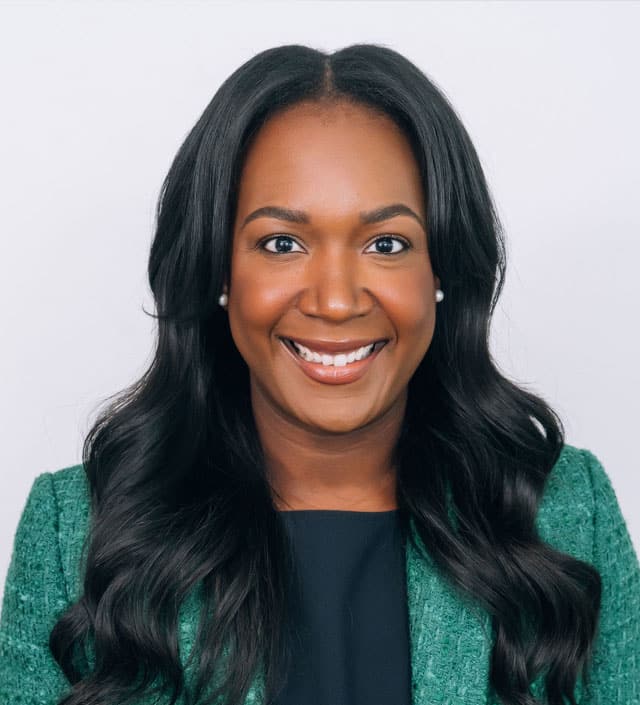Editor’s note: William (Bill) Bengen, creator of the well-known 4% rule for annual retirement withdrawals, boosted his minimum safe withdrawal rate to 4.7% in May. In his new book, “A Richer Retirement: Supercharging the 4% rule to Spend More and Enjoy More,” published August 5, Bengen delves into his research methods and findings; discusses the elements of a comprehensive, low-risk plan; and shares case studies. I recently spoke with Bill about his new book and more.
Jerilyn Klein: Congratulations on the release of “A Richer Retirement”! You kick off your book with a question that keeps many investors up at night: “Will I Outlive My Money?” Ideally, when should advisors begin talking to clients about how much they can safely withdraw from their investments and savings to make their money last a lifetime?
Bill Bengen: As early as possible, because the more time clients have to save, the more likely they’ll have the lifestyle [they want] during retirement. You can discuss it 20 years before retirement, even more, to determine whether or not the savings they’re proposing are sufficient. Retirement for many people is something that looks very far away — but believe me, from experience, it comes quickly.
Klein: You recently expanded your universal “SAFEMAX” [safe maximum withdrawal rate] to 4.7% — which you also refer to as the “worst case” withdrawal rate. For a 65-year-old investor with a $1 million retirement portfolio, roughly what does that translate to in dollars that first year in retirement? What about a client with a $5 million or $10 million portfolio?
 Bengen: Let’s use 5%, which I think is a better number for today. If you have a million dollars in your IRA account, the first-year withdrawal would be $50,000 which is 5% times the value of your portfolio. After the first year, though, you forget all about the 5% and, much like how Social Security operates, you give yourself a cost-of-living adjustment (COLA) each year based on the prior years and CPI number. This hopefully keeps you on pace with inflation. I express everything in percentages, to maximize applicability, so you’d calculate the first-year withdrawal the same way for a $5 million portfolio [$250,000] or $10 million portfolio [$500,000].
Bengen: Let’s use 5%, which I think is a better number for today. If you have a million dollars in your IRA account, the first-year withdrawal would be $50,000 which is 5% times the value of your portfolio. After the first year, though, you forget all about the 5% and, much like how Social Security operates, you give yourself a cost-of-living adjustment (COLA) each year based on the prior years and CPI number. This hopefully keeps you on pace with inflation. I express everything in percentages, to maximize applicability, so you’d calculate the first-year withdrawal the same way for a $5 million portfolio [$250,000] or $10 million portfolio [$500,000].
Klein: Did you round up to a 5% withdrawal rate to keep it simpler?
Bengen: Yeah, 4.7%, as you aptly pointed out, is a worst-case scenario. There was only one retiree in history [based on my research] — retired in October 1968 — who encountered conditions that forced them to have a withdrawal rate that low. Over the last 100 years, the average has been 7%, believe it or not. And if you look at today’s environment, even though this is not a great time to retire, in terms of maximizing retirement income, because of the high stock market valuation, you can still, I think, withdraw 5 ¼, 5 ½%. So, 4.7% is really very stingy spending; it’s only for those who are so conservative they want to be sure nothing in history has gotten worse than what they may experience.
Klein: You shifted from your 4% rule to the 4.5% rule after adding small cap stocks. And in your book, you discuss how you updated this to 4.7% after adding four new asset classes — micro-cap stocks, mid-cap stocks, international stocks and T-bills. You explained your research is based on buying and holding investments — although you noted you don’t necessarily endorse that. But how much of a stock market pullback might prompt you to lower your rule?
Bengen: You wouldn’t adjust the 4.7%. What you do would is adjust your equity allocation to temporarily reduce your exposure to stocks. And then after the smoke clears, you can hopefully capture a lot of the upside in the market once it starts to rise again.
Klein: So, the withdrawal rate would stay the same regardless of the markets?
Bengen: Yes, with some minor exceptions. When a client is in retirement, their plan should include a template showing how their investments must perform in order to meet their planned withdrawal rate. Use that as a measuring stick, and each year compare where they are to where the original plan should be. If you encounter a bear market early in retirement, since the template doesn’t include bear markets — it just goes up on an average-return basis — you’re going to find that you may start out at 5% and temporarily go to a 6, 7, 8, 9% withdrawal rate because the stock market has dropped so much.
However, stock markets recover and I’ve found, in most cases, the best strategy is just simply to ride it out and not be concerned because the stock market recovery will eventually return you to your plan very nicely. But if you encounter inflation, much more serious inflation, you need to act on immediately, start reducing your expenses, and preserving your capital.
Klein: You describe inflation as “the greatest enemy of retirees.” How much of an uptick in inflation might prompt you to revise the 4.7% rule?
Bengen: It would probably take something like what happened in the 1970s where we had a decade of 7, 8, 9% inflation. We haven’t seen anything like that before or since — but it could happen, and I’m concerned about it, because with all the deficit spending governments throughout the world are doing, they’re creating an inflationary environment. They’re boosting economies artificially. So that’s something we’ve got to all watch out for.
If you take a look at the 1960s compared to the 1930s, the 1930s had a 90% stock market decline. Usually when you have a huge stock market decline, you see withdrawal rates drop. But what was different about the 30s was it was a deflationary period. So, people were actually able to reduce the withdrawals about 10% a year for several years and that offset their losses in their stock portfolio. The worst-case scenario was not the 1930s but the 1960s where they hit bear markets and then inflation — a devastating combination.
My advice to retirees is if they see inflation picking up and it looks like it’s going to be a long-term phenomenon, they should adjust their lifestyle accordingly. Spend less until that storm blows over, because if the storm goes on for a long time, it’s going to devastate your portfolio. Then hopefully when the sun comes out, get back to your regular plan.
Klein: In your book, you identify eight elements you say are critical for investors to consider when developing their personal withdrawal plan. One element is the withdrawal scheme. You’ve said you favor the “COLA” (aka “lifestyle”) withdrawal scheme, since it provides an income stream that’s adjusted annually for inflation. [Other schemes include “fixed annuity,” “fixed percentage” and “front loaded” and “performance based.”] Do you suggest building potential caregiving costs into clients’ withdrawal schemes or keeping this in a separate bucket?
Bengen: Healthcare, long-term care, major home repairs, buying a new car — those can all be built into projections, and then when you add them all up, you’ll see if the 4.7% rule is enough to cover them. Also, if you want to make bequests to your children while you’re alive — which is a great thing to do, because you get to see them enjoy the money. Legacies are doable, but the cost is high. You’re going to have to take quite a haircut in your day-to-day expenses.
Klein: For individuals who don’t have long-term care insurance, how much would think is reasonable to save for these potential expenses?
Bengen: I’m not a person who focuses on the expense side, I’m basically looking at the withdrawal side. So, in today’s world, I don’t know what that number is. I just know it’s going to be pretty substantial [for a long-term-care policy]. And I think the premiums of those policies have been known to jump quite a bit unexpectedly during retirement. So, it’s something you need to figure in, probably conservatively.
Klein: You based your calculations on a 30-year planning horizon, but also recommend incorporating a margin of error — of as much as five to 10 years — in case someone lives longer than they anticipate. Does that mean advisors should be helping clients plan for a 35- to 40-year retirement? And do you have any special planning consideration for people who retire young, before they qualify for Medicare?
Bengen: I think you definitely can make a case for that. Let’s say a person is estimated to have a 25-year life expectancy. To me, it seems perfectly reasonable to use at least 30, maybe 35 years, so if they live a lot longer than they expected, they won’t run into trouble. You don’t want to be running out of money at age 90, when you’re still healthy.
People who retire young, they’re obviously going to have a much longer planning horizon. This includes the FIRE folks – Financial Independence, Retire Early. The longer your planning horizon is, the lower your withdrawal rate. Although if you start at 4.7% for 30 years and go to 50 to 60 years, it drops to 4.1% approximately but then it doesn’t go any lower than that. It kind of reaches the floor. So, if you live 100 years in retirement, hopefully 4.1% would be sufficient.
Klein: Can you explain why this floor occurs?
Bengen: Over long periods of time, the stock market returns become more dependable. In a five-year period, stocks might do anything, but over a 25- or 30-year period, stocks will probably be pretty close to the 10% that they’ve given over time.
Klein: When you started researching “safe” retirement withdrawals back in 1994, retirement was on the distant horizon for you. Now more than a decade has passed since you retired from your advisory practice, and you mention in your book that you can attest to the feelings of fear and lack of control that retirement can bring. Has your personal experience influenced your research and what you think advisors should prioritize with clients — and if so, how?
Bengen: I’m a kind of like a guinea pig for my own research. I followed my cooking — when I retired in 2013, I took the safe withdrawal rate of 4 ½ %. But the stock market has done so well over those years that I recently was able to raise my withdrawal rate. I felt justified in doing so.
Klein: Will you share what you raised it to?
Bengen: I think I went to 4.9%, which is a pretty significant increase, and I could probably go more, but I’m conservative in nature. This stock market is so overvalued that you almost feel as if at some point there has to be a major adjustment to prices to bring it back into historical register. But who knows what will happen.
Klein: For advisors who read your 2006 book, “Conserving Client Portfolios During Retirement,” what are a few other new points that have emerged through your research that you’ve captured in this book and would really like them to be aware of?
Bengen: Probably the most important one is accessing higher withdrawal rates above the worst-case scenario. Back when I wrote the first book, there was no way to calculate that scientifically. About three, four years ago, I discovered a way to incorporate inflation and stock market valuation into a two-factor model, which allows you now to pretty reliably select a withdrawal rate from history that matches the circumstances you retire into. I’d been looking for years. I knew inflation had to play a role. And what happened in the 1930s versus the 1970s clearly indicated inflation was at least as important as the stock bear market. I just hadn’t found the math do it. Then I just had an inspiration one morning and I put inflation first. Once you do that, things sort themselves out very nicely.
Klein: Anything that you think caused that inspiration that morning? Did you have an extra good cup of coffee or something?
Bengen: I wish I knew! If I could do that, I’d try to repeat it!
Klein: Your bio notes that you’ve had four careers: You trained as an aerospace engineer, you were the CEO of your family’s soft-drink bottling business, you had a fee-only financial planning practice, and now you’re a researcher and aspiring novelist. What advice do you have for new advisors or advisors who are career changers – and how can seasoned advisors help them acclimate more quickly?
Bengen: That’s a good question. I operated a firm with just my wife, so I never had to acclimate other advisors. But I think you want to find a way to pass on the wisdom you’ve accumulated over the years and the good techniques, particularly people skills. If you say [to a client], “You’ve got to save 15%” and they say, “I can only save 5,” you’ve got a selling job to do.
I think it’s a wonderful profession to get into. I really miss the work I did for my clients in finance. You get the feeling that every day you can make a difference in people’s lives, and that’s a rare opportunity. This is complex, and most people have trouble dealing with a lot of complexity. To have an advisor lay it out for them in a rational manner, allowing them to make good choices, is invaluable.
Klein: I saw that Morningstar’s recommended withdrawal rate for 2025 is 3.7%. Last year, I attended a Morningstar webinar where they said a withdrawal rate of 5.2% might make sense. Why is your withdrawal rate so different, and more stable?
Bengen: I’m not quite sure what their latest research is based upon, their methodology. A couple of years ago, when they came out with a forecast of about 3.3%, I contacted them and asked to see their calculations, which very graciously they did allow me to see. Built into those were very low forecast returns going on for many, many years. From my perspective, there’s never been a period of time that long where stocks have done that poorly. Maybe they just have a much more conservative view of what stock returns are going to be in the future and the impact they’ll have on withdrawal rates.
I pay attention to the rates others are suggesting, as just a matter of interest. My numbers are my numbers, and I feel confident in the methodology. The only thing I’d be careful with: I base it on historical data, and who knows what will happen future. Markets can change and may invalidate some of the conclusions. We have to be constantly aware that change is present, and adapt to it.
Klein: You wrote in your new book that it’s “not likely to be my last word on the topic. There’s so much more to learn and I’m eager to share it with you.” What else are you exploring regarding retirement spending and what else would you like to learn?
Bengen: I used the original version of Professor [Robert] Schiller’s P/E [price-to-earnings] ratio as a measure of stock-market valuation. He’s since created an adjusted version, so I would like to test how this new version affects my calculations. I’m hoping that’ll improve them.
I have a website, Bengenfs.com, which complements my book and supplements the information, because the book is just not big enough to contain all the charts required to do the work. Over time, I’m going to be expanding a number of charts to a 30-year, 40-year time horizon, maybe a 50-year time horizon, using taxable accounts, figuring out legacy, so that people can do better planning.
Another issue if I could just add that: My research is based on history, and historically small-cap and micro-cap stocks in the U.S. have done very well, earning higher returns than large-cap stocks. That hasn’t been the case over the last 10 years, so the question is: Is this just a temporary phenomenon or has something changed in the small cap world?
It’s possible things may have changed in the sense that the best small companies now often get siphoned off by venture capital and private equity, and then don’t become available for purchase by mutual fund and exchange-traded fund managers, so that we’re dealing with a smaller selection of funds, and perhaps not the prime companies. My concern is that over time this may come a permanent phenomenon when small cap stocks will decline in their returns relative to large cap. Not quite sure I’ve figured out how to adjust to that. Just keeping a well-diversified portfolio, a lot of different assets in it, since you never know what’s going to do well and what isn’t.
Klein: What have you been doing in retirement, besides research?
Bengen: Well, that took almost all of last year! But I play a little bridge, tennis, golf. I’m remarried. I lost my first wife a couple years ago, and my new spouse lost her spouse about same time. We met in bereavement group. So, I have a whole new relationship in my life, which is wonderful. Barbara, she’s a savior for me. For me, the important thing is to focus on three things: family, friends and passions in your life. If you have those three in your life, and you cultivate them, you’re probably going to have a successful life and a successful retirement because they’re really all the things that matter.
Jerilyn Klein is editorial director for Rethinking65. This article has been edited for brevity and clarity.







